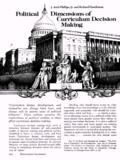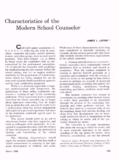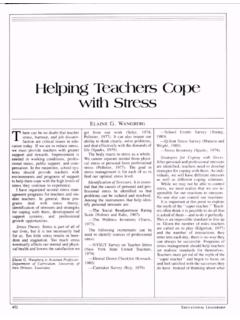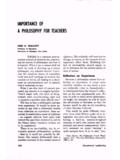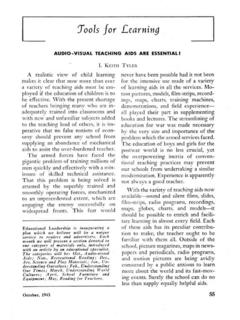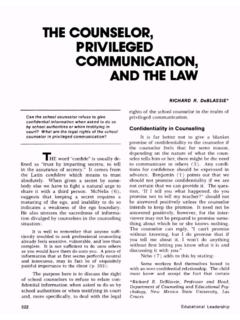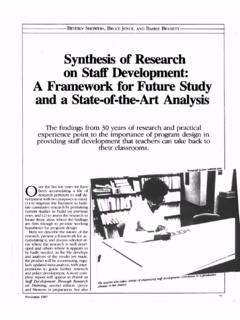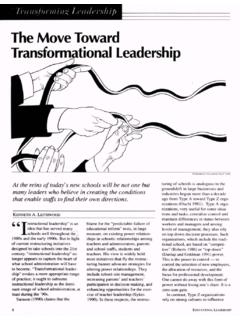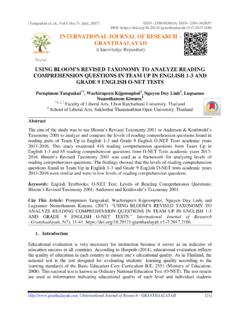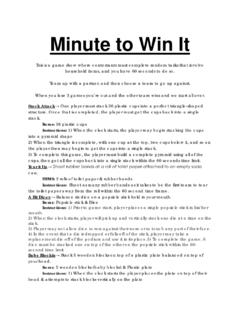Transcription of Team Teaching for the Elementary School - ASCD
1 Philip Lambertq ~ =q ~ = = =b ~ =p What occurs whentwo or more teachershave responsibility for a groupat a given time?AMONG current developments in edu cation, there is one which today is caus ing interest and excitement, as well as some negative reactions. This develop ment is t eam Teaching ,. Though many ex periments with instructional teams have heen made in junior high and high schools, the team Teaching plan seems to have equal if not greater relevance to the needs and objectives of the elemen tary basic principle behind team teach ing is not new, but older than formal education itself. The family unit, made up of many cooperatng members par ents, grandparents, aunts and uncles, older brothers and sisters was in the Teaching business long before the first School was built.
2 Today, children con tinue to learn basic skills from the mem bers of their families most interested or best qualified to teach them. team in struction, too, is based upon the idea that every teacher excels in some, but not all, of the abilities and techniques that are necessary for the education of a single child. Ideally, these special abili ties should be used to the fullest extent, so that each child will get the best pos sible education his School can offer in every present system of Elementary School organization, however, attempts to give every teacher the same number of pupils, the same time schedule and curriculum, and the same responsibility, regardless of his or her special training, experience, skill, or capacity for taking responsibility.
3 In addition, many elemen tary School teacher^ are overwhelmed with nonprofessional duties. Up to 40 percent of their time is spent in keeping attendance, collecting milk money, typ ing stencils, correcting routine tests, supervising playground and lunchroom activities, etc. Although most Elementary teachers are sold on the educational im portance of these tasks, actually how educational are they? This use of pro fessional personnel for routine work that could be done at far lower cost by a secretary or a student aide is a waste of our limited Teaching resources. It is as if qualified doctors were required by law to spend from two to three hours a day taking temperatures, filling in charts, and sending out Lambert if Associate Professor of Education, University of Wisconsin, and Director, Washington Elementary School , Madison, =NVSMURIn its simplest form, team Teaching oc curs whenever more than one teacher have responsibility for the same group of children at a given time for example, whenever a certified teacher is assisted by a student teacher.
4 In a more complex form the instructional team is a group of teachers of different experience and abil ities aided by various nonprofessionals. The team may have from three to six or more members and be responsible for an Elementary School class of as many as 150 or more children. The class may be all of the same grade level or of varying grade is no typical instructional team . Let us look, however, at one team that might be assigned to a class of about 125 children ranging in age from five to eight years. At its head is the team chair man an outstanding and experienced teacher who, let us say, is especially strong in the fields of language arts and social studies. He is assisted by two other fully licensed teachers: one has had several years of experience and some special preparation in the Teaching of primary math and science, while the- other, who has just received his creden tials, is especially interested in arts and crafts.
5 There are also two Teaching in terns who are completing their college or university preparation, and an instruc tional secretary, perhaps a mother, who serves as a part-time teachers' aide. The salaries of these last three staff members added together come to less than that of two fully qualified teachers. Since the team chairman receives an increased salary in recognition of his special re sponsibilities, the cost of the whole team is approximately the same as that of the teachers who would have been assigned to the same number of children under the present Teaching should not be confused with the departmentalized plan in which each teacher is responsible primarily for one subject area. The members of an instructional team , though they are all specially competent in certain areas, have their primary responsibility towards all the children in their large class.
6 For example, if one teacher presents a science demonstration to the large class, the other teachers assist the demonstration teacher during the presentation. There fore, when the groups break down into small work groups, each teacher has heard and participated in the demonstra tion from the beginning. This enables them to be effective small group than a dozen communities in the country have initiated team Teaching in the Elementary School . In most in stances the experiments are in a develop mental stage, and the staff members in volved are not ready to evaluate their efforts completely at this time. However, both the Franklin School in Lexington, Massachusetts, in cooperation with Har vard University, and the Washington School in Madison, Wisconsin, in co operation with the University of Wiscon sin, are developing experimental designs to compare team Teaching with present methods of Teaching .
7 This serious effort is taking place despite the fact that some researchers believe there are too many variables to make it possible to set up a completely valid experimental situation, in which only one aspect of team teach ing would be tested at a results from the Franklin School have been inconclusive. However, the staff has reported that pupil achieve ment and adjustment remained the same notwithstanding the unsettled conditions of experimentation. The Washington School has begun a five-year project de-86 Educational Leadershipsigned to answer such questions as these: What effect does team Teaching have on pupil achievement in the various subject areas? What changes took place in chil dren's perception of authority figures under team Teaching conditions?
8 Informal evaluation seems to show that team Teaching works in a variety of Problems Are Solved?Let us look now at some typical every day problems of Elementary education and see how team Teaching might help to solve these:1. Ricky has just had a fight in the play yard; he is now crying uncontrollably in the hall as class begins. What was the fight about? Who started it? What should be done? A few minutes' attention from someone who can learn the answers to these questions and who knows Ricky would probably clear up the matter. But Ricky's teacher cannot leave the rest of the class even for a few minutes. She will have to send him to the principal's office, even though this may make him more disturbed. With an instructional team , someone who is familiar with both the child and the immediate situation is always available to Mrs.
9 McKay, a third grade teacher, has been ill off and on for several weeks. What effect will this have on the lives of the children in her class? Under the present system, each time she is absent a substitute will be sent in, and the chances are that each time it will be a different substitute who is completely unfamiliar with the children, the lesson plan, and perhaps even the School build ing and personnel. She will not know that David has trouble with division, or that Susy will quiet down if she doesnot sit by Jane. She does not know whose turn it is to take attendance, what to do with the two turtles that have been brought to School , or where the nurse's office is. Probably she will be able to do little more than baby sit with the chil dren until Mrs.
10 McKay is well enough to continue their team system does away with this problem. In an emergency, any one of the other team members can pitch in and the instructional program can con tinue unimpeded. If a substitute is as signed to the class, there will always be someone available to answer her ques tions and tell her whatever she needs to Sally just cannot get along with her teacher, Miss Grey. Sally has never been a disciplinary problem before, but she is lively and boisterous, and Miss Grey, though an excellent teacher, is a quiet, reserved kind of person. Ar> experienced principal knows that all teachers can not work effectively with all children. Should he move Sally to another room? Even if the child is not upset by this change, the principal may have to spend weeks reassuring Miss Grey that it was not her fault that she couldn't help Sally adjust and that she is not a failure as a teacher.
